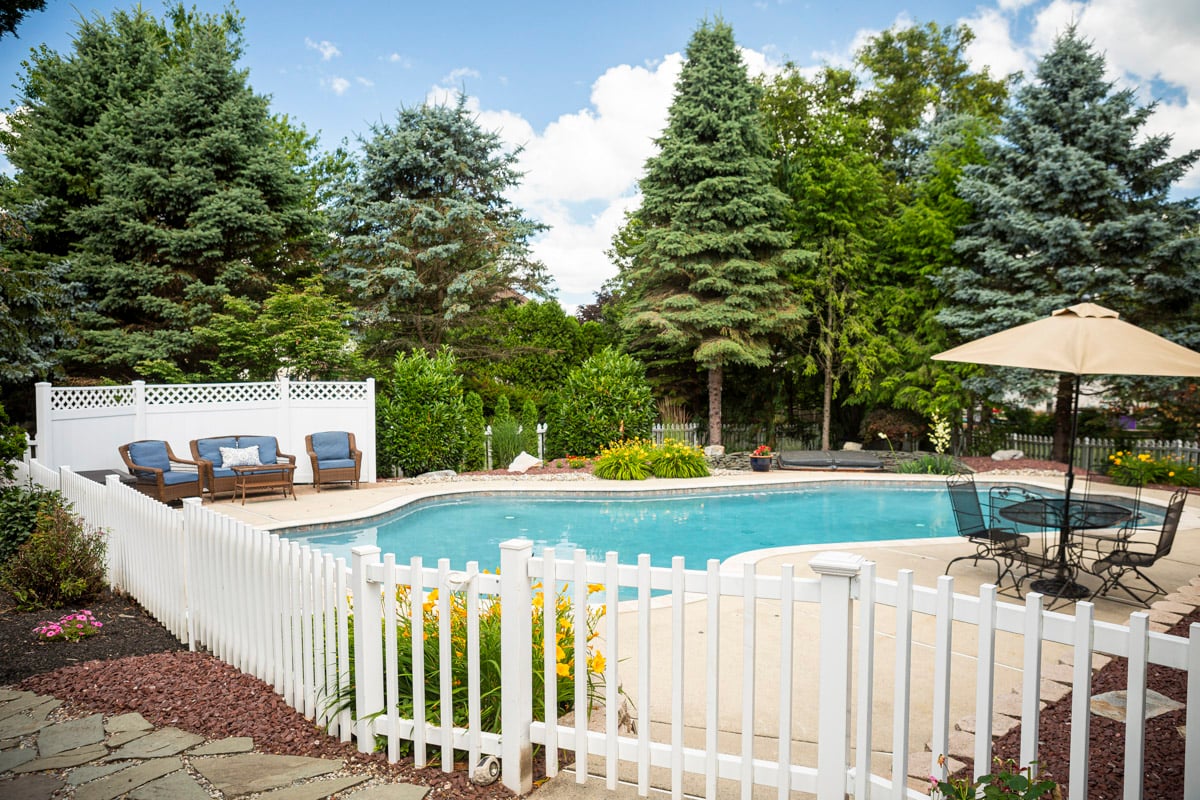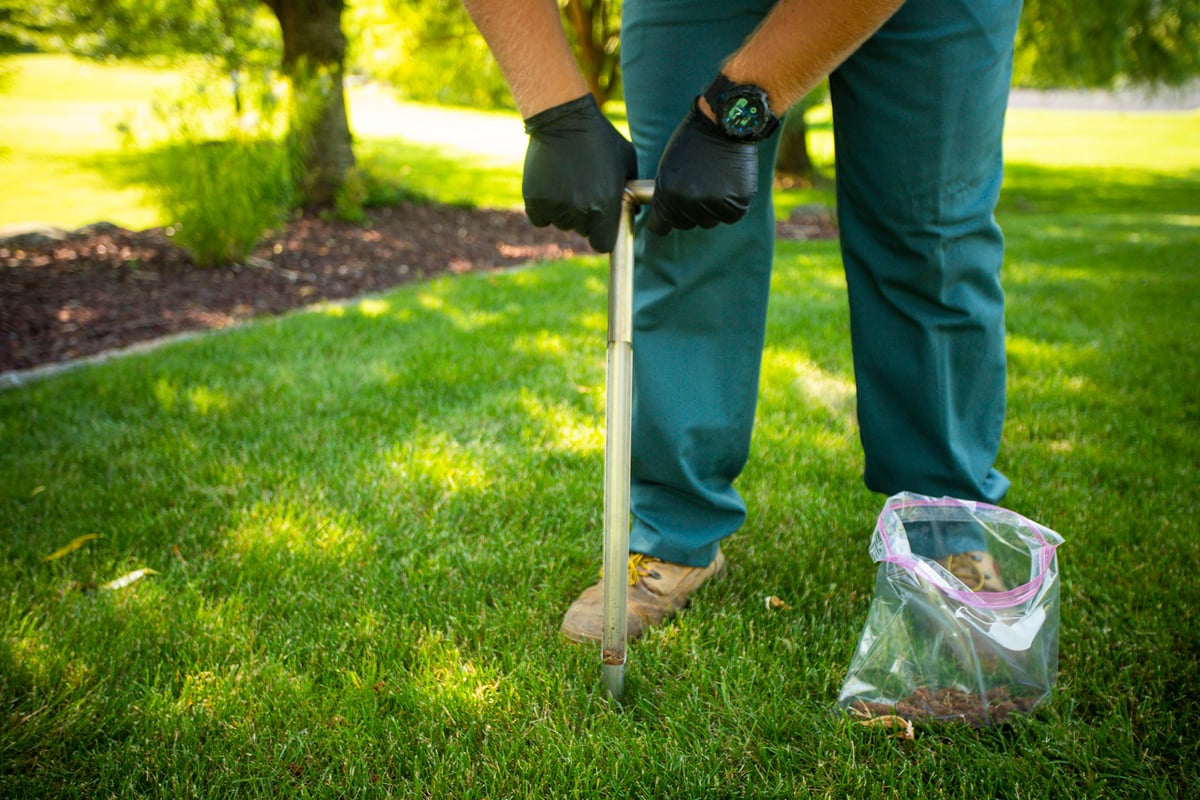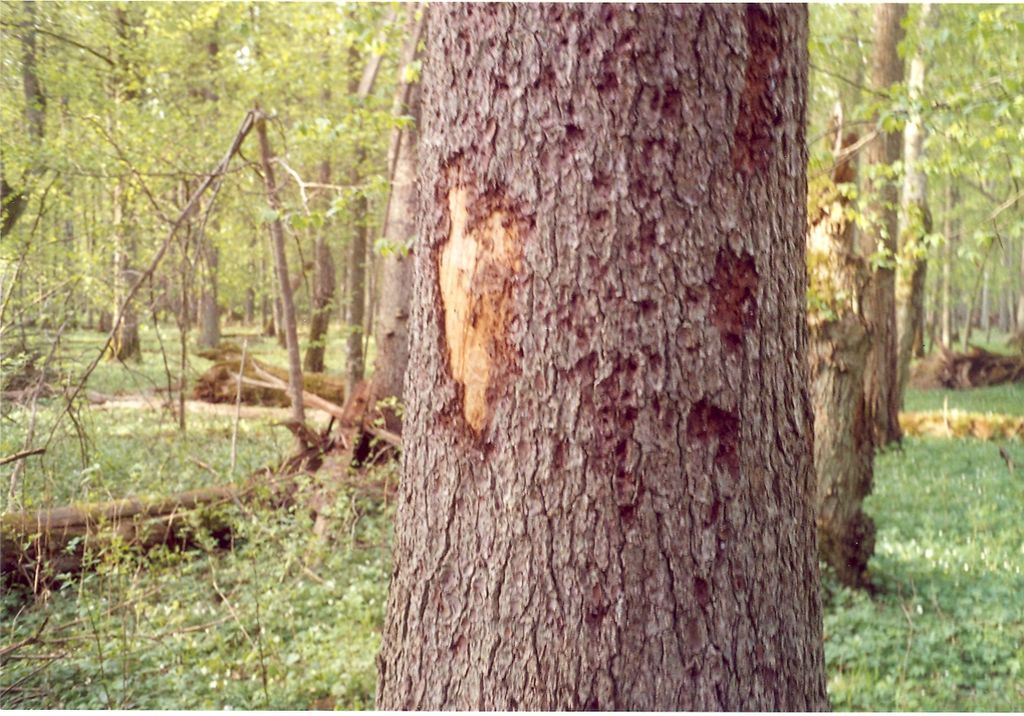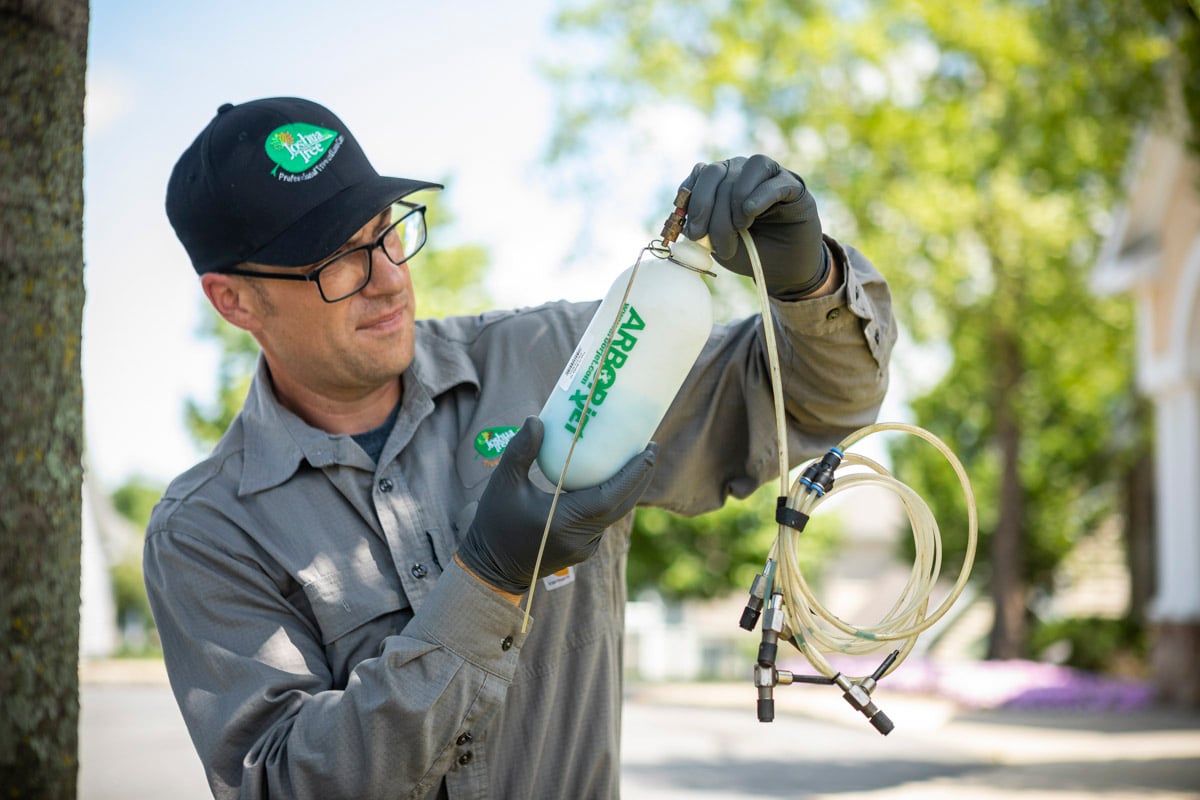Pine trees are popular for many reasons, including their year-round greenery and ability to provide privacy no matter what the season.
Unfortunately, pine trees are not without their problems. While they’re not a high-maintenance tree, there are some pine tree problems you should be aware of.
Whether you already have pine trees or you’re thinking about adding some, it always helps to be educated on what to expect. That’s why we’re talking about some of the most common pine tree problems and how you can deal with them.
Pine Tree Planting Mistakes
Surprisingly, some of the biggest pine tree problems actually come back to improper planting or poor plant selection.
As with any tree, if it’s installed in a poor location (or installed improperly), it’s never going to perform well. This could mean it wasn’t planted deep enough, it was planted too deep, or it was installed in a location where it didn’t have access to the sunlight it needs.

Pines typically require full sun, so if they’re installed in a shady area, they’re going to struggle. Prior to installing pine trees, it’s important that the location is thoroughly assessed.
If there are structures or other trees that are going to block your pine trees’ access to sunlight, it might make sense to consider a better location.
Installing trees with too much mulch can also be a planting-related problem. When mulch is piled up against the tree bark, it can lead to trouble. That’s because the tree bark is meant to protect the tree but it needs access to sunlight and oxygen. If mulch is piled against a trunk, the bark will begin to rot.
Poor Soil Health
Sometimes pine tree problems have to do with the soil in which they are planted. Soil is such a vital element to the health of any tree and if your soil is in rough shape, your trees, and other plants may begin to struggle.
At Joshua Tree, we can perform soil testing for trees, which can help us to determine if soil health is at the heart of your problems.

We’ll look at the pH level to determine if it’s where it should be for the trees to thrive. This exact number can vary based on the exact species. But there’s no question that if pH isn’t where it ought to be, your tree’s color and vigor can suffer.
Pine Tree Diseases
Of course, as with any tree, there are also pine tree diseases that can impact your trees’ health.
Pine Wilt is a particularly destructive disease that can actually kill a pine tree in a matter of years.
This disease is caused by the “pine wilt nematode,” a microscopic, worm-like organism that grows inside of the tree’s water.
Another potential pine tree disease is Diplodia Tip Blight, which is caused by a fungus that overwinters in infected needles, cones, and tissue. This disease will cause the pine needles to turn brown, yellow, or gray.
Pine Tree Pests
The problem could also be related to a pest, such as a borer insect.
Bark beetles, for instance, have been known to commonly attack pines. Damage from a bark beetle looks like tiny holes in a randomized pattern. This makes it distinguishable from holes made by woodpeckers, which will appear in a straight line.

Other pests that might attack pines include the white pine weevil, the pine sawyer beetle, and the Zimmerman pine moth.
What to Do About Pine Tree Problems?
Any time that you might be experiencing a problem with a tree it can be frustrating. As far as what to do about pine tree problems, it makes sense to consult with a professional.
The truth is, you could be dealing with any one of these problems—or even more than one at once.
There could also be environmental factors at play like pollution, which may be impacting your pine tree’s health.
Another step that you can take is to implement a Plant Health Care program. A program like this can help to strengthen your plants, including pine trees, against problems like diseases, pests, and environmental stressors. It will combine fertilization applications with disease and pest control treatments.

Ultimately, a healthy and thriving tree will be able to better defend itself against future problems.
Of course, a Plant Health Care program can’t fix a mistake such as poor or improper planting.
If it turns out that your tree is struggling because of its location or another planting mistake, a plant health care professional can help make recommendations, even if it involves installing a new tree in a better location.
Working with Joshua Tree to Protect Your Pine Trees (and More!)
At Joshua Tree, we can help you with diagnosing your pine tree problems and devising a solution that makes the most sense for your property.
If you want to do whatever you can to protect the health of your pine trees (or any other plants on your property), it makes sense to have a professional on your side.
With the right care for your trees, you’ll gain valuable peace of mind. If you’re interested in having your trees inspected and their health assured, contact us for a free consultation or give us a call at 833-JTE-TREE.
Image Source: Pine needle scale, bark beetle, pine needles



